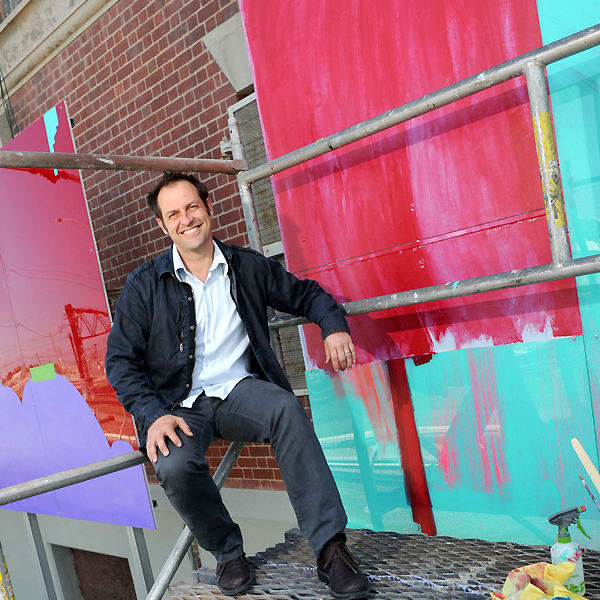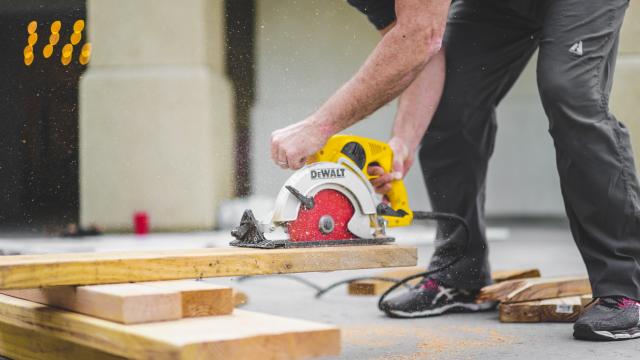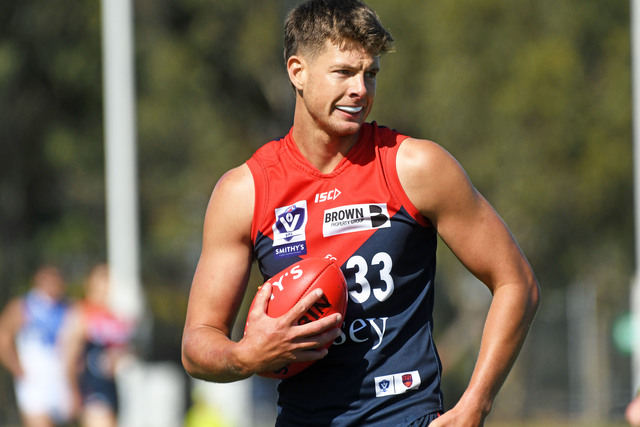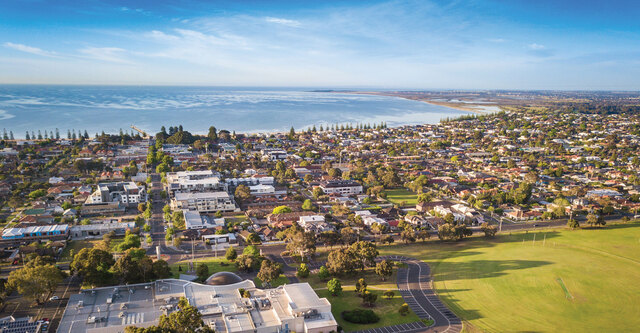The west’s artistic hubs are growing rapidly, in both size and stature, as new and emerging art moves beyond the city. In the background there has been big change, coupled with even greater aspirations of leading the way in Melbourne’s arts scene. Robert Fedele opens the doors to the Footscray Community Arts Centre, Kensington’s Revolt, and The Substation in Newport.
THE VISION
The back streets of Kensington, flanked by a maze of industrial architecture, are perhaps the furthest place Ryan Hodge imagined his artistic vision coming to life.
In his native Queensland the concept of Revolt Productions had been simmering since his youth, gaining real momentum when he and a handful of like-minded individuals met at a performing arts school.
He describes Brisbane as a place with lots of art but not enough stages, starved of support for independent creativity.
Revolt’s move to Melbourne a decade ago was calculated, the thinking being that group members spread out and attack their chosen fields, learning as much as possible.
Hodge, Revolt’s artistic director, is an accomplished lighting technician. His brother Steve, the venue manager, has a background in ballet and dance; Tim Fulton has a history in film and hospitality, and so on.
When the opportunity arose in 2009 to snare the space, a vast, cave-like area on the bottom floor of the 19th century Younghusband building, Hodge knew it was a now-or-never scenario.
‘‘I walked into this space and went wow. I could really do some stuff here,’’ recalls Hodge.
‘‘We kind of never thought it would actually identify itself in a space. I thought of Revolt Productions being more of a group or a core organisation that went around and did stuff.’’
Hodge says the name Revolt was hatched from an artistic point of view, alluding to the ideals of freedom for the creatively different, and the group’s mission to create a hub to nurture live and visual art in all its forms.
‘‘It’s not revolt against the norm. It’s not riot on the streets. It’s actually revolt against concept or revolt against change.’’
A step across the railway tracks, the Footscray Community Arts Centre is a symbol of persistence.
In 2014 the centre will celebrate its 40th anniversary, cementing itself as the nation’s longest-running community arts centre.
Yet it’s been changes undergone in recent years which have proved most significant, namely, a new building comprising state-of-the-art performance spaces.
Director and Chief Executive Officer Jennifer Barry, a giggly, curly-haired woman brimming with enthusiasm, came on board three years ago after decades working throughout the arts sector.
The blueprint for the new centre was drawn 10 years ago but it took years of fund-raising to get it off the ground. Building finally began in 2010, and it opened to the public last year.
Barry says her ambition at the start was to wipe away the mindset of apologising for community art, rather than celebrating it.
‘‘The evolution of the arts sector has meant that even as little as five years ago, community arts weren’t so fashionable, they were a bit on the nose, and I really believe that community art
and contemporary art practice is at the forefront of what’s happening in the arts industry.’’
At Newport’s The Substation, director Jeremy Gaden is also banking on a resurgence in the appreciation of groundbreaking local arts spaces.
Though his ideals are similar to Footscray Community Arts, where he formerly worked as a program manager, he says The Substation’s vision is markedly different.
‘‘Whilst the organisation started in very much a community, grassroots development way, the future vision is a bit of a combination of both.
‘‘We don’t necessarily talk about ourselves as a community arts organisation. We talk about ourselves as a contemporary arts organisation with strong community groups.’’
Opening in 2008 after a 15-year community-led restoration, Gaden hopes The Substation will become known as an edgy, contemporary arts precinct.
THE CHALLENGE
Even the best-laid plans can go awry.
The core group of six behind Revolt Productions had been chipping away every day for a year, building their dream from scratch with their bare hands – until it all went sour.
In March 2010, mere months before completion, the building was hit by one of Melbourne’s typically unseasonal hailstorms, a freak episode which saw Ryan Hodge’s creation literally washed away before his eyes.
‘‘That was the hardest moment in the whole process … just seeing rain,’’ says Hodge, who only now can see the funny side of it.
‘‘That put us back to square one. We were probably eight months in and ready to open in April. ’’
Hodge concedes there was definitely a moment where chucking it in crossed his mind. But the group rallied, mentally as well as physically, rebuilding stages, patching up walls, and getting on with the job.
Revolt Productions opened last year, quickly forging a niche as a cutting-edge arts hub catering to live music, theatre, cabaret, film screenings, and art exhibitions.
It’s a privatised model and the team prides itself on its in-house production facilities.
‘‘To work for us you’re knee deep in it, and you’re living it,’’ Hodge says of the ethos. ‘‘In order to make it viable for yourself financially you need to sell your soul to the beast. You’re selling your love, your time, your passion.
‘‘We’re not gonna take on shows that aren’t viable. All the other venues aren’t spending their own cash, whereas we’re spending our own cash. So it’s got to be viable.’’
The emphasis on breaking even is a consistent theme across the arts sector.
Funded by all arms of government, the Footscray Community Arts Centre has grown its profile in recent years, thinking outside the square with events like its summer music series.
It didn’t run this year because there weren’t enough funds and Barry says it simply illustrates the tightrope which arts hubs teeter on.
Gaden is in a similar position at The Substation, where he’s the only full-time employee. Staff numbers have expanded fourfold but they’re mostly part-timers and volunteers.
He says the capacity to deliver a world-class arts precinct will ultimately rest on securing state funding.
Gaden previously worked in venue management, moved on to organising festivals such as the Melbourne Fringe, and then again to circus theatre and the Spiegeltent.
At Footscray Community Arts he learned about community engagement.
The Substation is his education rolled into one.
‘‘I guess what we’re seeing here is a combination of those two, which is reflective of my personal experience. It’s also a really interesting reflection of how that barrier between community arts and high end or contemporary arts has really broken down.’’
THE FUTURE
It’s a familiar story, says Gaden, of the west becoming trendy, the Latté Line creeping over, and in many ways the continuing gentrification of the area is a crucial part to the success of local arts hubs.
‘‘I think The Substation could have happened only at this point in time.
‘‘Three years ago the west probably wasn’t ready for something like this and really, with the ongoing gentrification of the area, the timing’s perfect for us to be here. I imagine that within five years time, we are a serious player on the national arts scene.’’
Barry agrees, but hopes core community values are preserved.
‘‘I think that’s been happening for a while now. You’ve got a working class or industrial area and it slowly gentrifies over time. The artists are always the first ones to come in and populate the space because the rent’s cheap or they can get access to spaces where they can set up studios. As soon as the artists start congregating and doing stuff it tends to be the energiser for everything else.’’
Barry says the next three years will be about finding the money to sustain its profile.
Hodge says Revolt has already exceeded his expectations and that he see its future delivering an eclectic calendar of events that people wouldn’t necessarily pay to go and see.
‘‘We want to alleviate the elitism that’s within the industry because it’s stopping ideas from happening. ’’
At The Substation Gaden talks up its future over the echoes of hammering, courtesy of a new room being built.
‘‘It’s pretty rare that Melbourne has had a new addition to its cultural infrastructure. To be able to do that in the west, which is traditionally arts poor and suffers from a lack of infrastructure, is just the icing on the cake for me.’’







